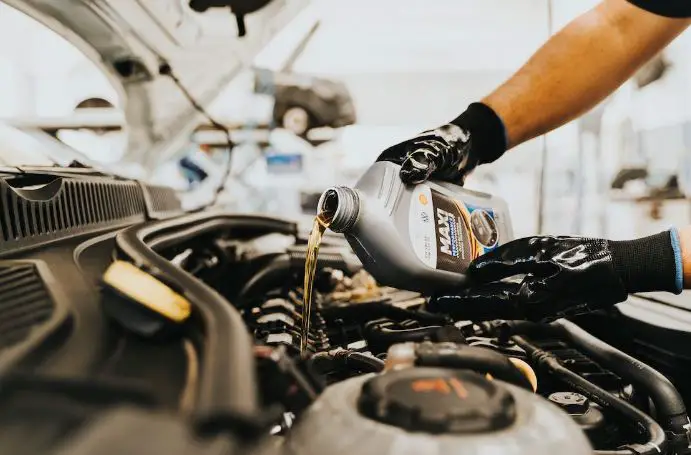Whether you drive a manual transmission car with a clutch pedal, or an automatic with its integrated clutch, the clutch itself is one of the many critical components that the vehicle simply can’t do without. In manual transmissions, one particular component that matters to the clutch ensemble is the clutch pressure plate.
In today’s blog, we are going to dive in deep and look at how this particular component works, what it does, symptoms you can spot to see when things might be going wrong, how to repair the plate and more.
What is a Clutch Pressure Plate?
The clutch pressure plate is a component found within the manual transmission clutch components. It’s a heavy metal circular plate that works in conjunction with springs and levers to apply pressure to the main clutch plate. When pressure is applied, the main plate moves against the flywheel, allowing energy to shift from the crankshaft into the gearbox before moving on to provide torque to the wheels.
There are 3 main kinds of pressure plates:
- Long style – has 9 springs, 3 levers, and is used mostly in race cars
- Borg and Beck – has 9 springs, 3 levers, and is used mostly on street cars
- Diaphragm – has 1 Belleville spring, and is used on most modern vehicles as it requires less effort to press the clutch and shift gears
How Does the Clutch Pressure Plate Work?
Manual cars have clutch pedals, which when pressed down will disengage the pressure plate, the clutch plate and the flywheel, interrupting the stream of power and allowing the driver to change gear ratio, or in other words to shift up or down in gear.
Do Clutch Pressure Plates Fail?
In a word, yes. Like any other part of your vehicle, the clutch pressure plate is vulnerable to the same rules of decline through wear and tear as any other part. In fact, your clutch pressure plate is subject to a lot of wear and tear since it’s constantly being used during any drive in a manual transmission car.
The good news is first that the clutch pressure plate is one of your heavy-duty components, which means that it is built to last. You shouldn’t need to replace a clutch until at least after 60,000 on average, but a well-maintained one that isn’t subjected to unusual wear and tear — e.g, through bad habits such as riding the clutch — can last for more than 100,000 miles.
Best-case scenarios aside, there are warning signs that your clutch pressure plate is having trouble, we’ll deal with those below
What are the Symptoms of a Clutch Pressure Plate Failing?
The following are all classic signs that your clutch pressure plate might be failing and is in bad need of maintenance. Pay close attention to the following occuring in your own clutch pressure plate:
- Spongy Clutch Pedal
When we say “spongy” here, what we mean is that the clutch feels loose. You might find you’re pushing it all the way to the ground far more easily than normal. A loose pedal is typically an indication that you have a loose clutch spring or diaphragm spring. If you take a look through the clutch fork, you might be able to see if these springs appear out of place or damaged in some way.
- Gear Slippage
Have you put the car into gear, only to then put your foot on the gas to be greeted by little to no real acceleration? What’s really strange about this situation is that you can see the tachometer going crazy, RPMs going through the roof, but your car isn’t launching forward as you might expect with all those revs. This is a phenomenon known as gear slippage, and it’s caused by a worn clutch pressure plate.
- Pulsing/Throbbing from Clutch Pedal
Drivers of manual cars know that a press of the clutch and shift up or down in the gears should be as smooth as butter. There should be no strange feedback, noise or other sensation other than the nice smooth shift. If, on the other hand, your clutch pressure plate is experiencing issues such as the flywheel being off-kilter or the release lever needing adjustment, then you might get some odd pulsing feedback from the clutch pedal.
- Noise when Releasing the Clutch
Another sign we can feel through the clutch pedal is a grating sound when we release the clutch after changing gears. There are actually several possible causes of that noise, but a faulty clutch pressure plate is definitely one of them. There should be no noise at all when releasing the clutch, so listen for anything out of the ordinary.
- You Struggle to Engage the Clutch or Change Gears
Finally, in contrast to the first sign we mentioned, another sign that your pressure plate is in trouble is that you’re finding it harder to depress the clutch and shift gears. If gear shifting is in trouble, then it points directly to that small network of interconnected gears and flywheels not shifting as smoothly as they should. There could be warping or other damage there.
Are There Any Ways to Test a Failing Pressure Plate?
The best way to test if your pressure plate is failing is to look out for the above symptoms, some of which you can test for yourself in a safe and controlled way, perhaps driving at low speeds in your neighborhood or in a parking lot. You can try moving the clutch pedal and shifting gears quite easily to see if you experience any of the things we mention above. If you detect even one of them, it’s worth letting a professional take a look at it.
Can You Repair a Clutch Pressure Plate?
Like just about anything in your car, not only do things wear down and get broken, but they can be repaired as well. The question is how much does it cost and should you just replace the pressure plate or just get an entirely new clutch?
How Much Does a Clutch Pressure Plate Replacement Cost?
The bad news is that if and when the pressure plate fails, it can take a bunch of other components with it: throwout bearing, clutch disc, springs and levers. Repairs and replacements can range from $90 to $400 depending on how many parts need repairing or replacing.
Should You Replace the Whole Clutch at the Same Time?
The answer to this one depends entirely on the extent of the damage that your clutch has experienced. If the pressure plate is the only part that’s seriously damaged and in need of replacing, then you can save some money by just replacing that. The chances are, however, that you will have multiple damage points and therefore it becomes more economical in the long term to get a whole new one.
Go Home









[…] an automatic transmission, the clutch function is automatic, so that means no clutch pedal. In this kind of car, being able to comfortably and […]